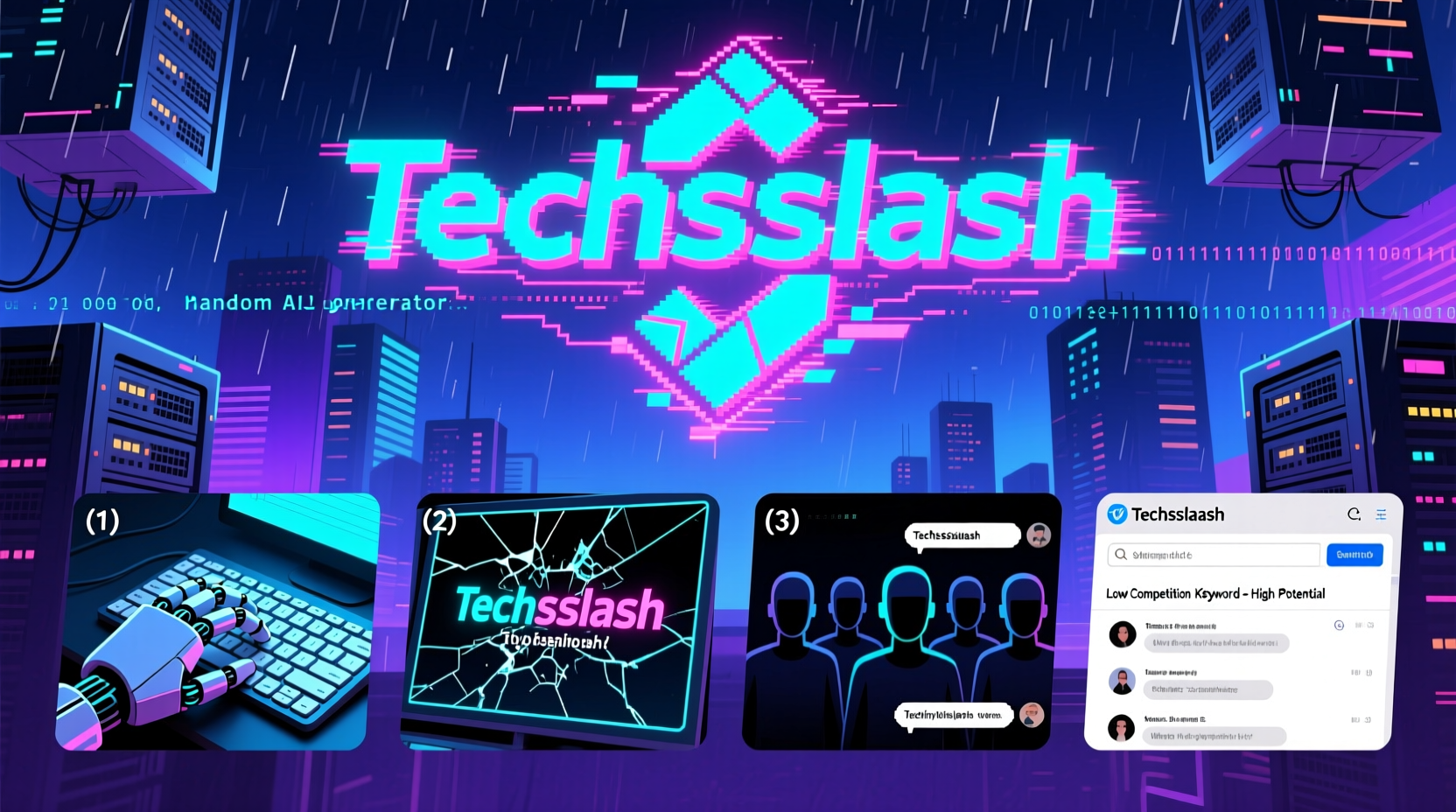In recent weeks, the term “Techsslaash” has quietly emerged across the web—in blog comments, autocomplete bars, and domain names like techsslaash.com and techssslash.com. Despite almost no official presence or content, the term is gaining notable traction. It currently holds a keyword difficulty (KD) near zero and yet is seeing a steady uptick in search volume.
So, what exactly is Techsslaash? Is it a new platform, an AI experiment, or something else entirely?
This guide explores what makes Techsslaash such a strange but valuable opportunity for digital marketers, content creators, and trend watchers alike.
What Is Techsslaash, Really?
“Techsslaash” has no clear definition, which in today’s internet ecosystem makes it even more intriguing. It may be:
- An AI-generated brand or placeholder domain
- A spin-off or typo variation of “TechSlash”
- A niche community-coined term
- A deliberate SEO experiment using low-competition keywords
The double “s” could be an intentional branding strategy—commonly seen in domains aiming for uniqueness when similar names are already taken. This naming trick is favored by automated branding tools and keyword generators.

What makes it compelling is that people are searching for it, even without knowing what it means. This search behavior shows real curiosity, and for SEO-savvy creators, that’s a golden window of opportunity.
Are Techsslaash.com and Techssslash.com the Same?
While both domains are active, they appear to have thin, low-effort content—possibly AI-generated and targeting the same niche. Both hide ownership via Whois privacy and offer minimal context to visitors.
Although they might be related (or one is copying the other), they lack quality. This gives a unique chance for an authoritative site—like Corexta or any publisher with a trustworthy voice—to step in and own the conversation around the keyword.
Publishing a well-structured, content-rich page could rank quickly, given the low competition and existing user curiosity.
Why “Zero KD” Keywords Like This Matter
When a keyword has no competition but rising traffic, it’s what SEO experts call a “trend seed.” These are early-stage terms that could either grow into something big or fade into obscurity—but getting in early gives you first-mover advantage.
Why these terms trend:
- AI search tools suggest them
- People land on confusing sites and search for answers
- Social sharing spreads them
- Domain redirects or link-building triggers further visibility
Essentially, Google has little to no idea what the term means yet. That means your content can define it.
What Others Are Getting Wrong
Most existing content around “Techsslaash” is:
- Extremely short or vague
- Clearly written by AI with no human insight
- Lacking structure, metadata, or user value
- Spammy or duplicated across domains
This makes it easy to outperform. With even basic SEO hygiene and real analysis, your article could rise to the top of results. Think: headings, schema markup, FAQ sections, and clear UX.
Why You Should Publish Now
If you create content now, while this keyword is still open territory, you’re more likely to dominate its SERP real estate in the long run—even if competition rises later. Publishing early also makes you the de facto source Google might begin to reference.
Final Thought
Techsslaash may be nothing—or it may be the next microtrend born out of AI behavior and digital curiosity. Either way, it’s a case study in how quickly obscure terms can gain traction in the AI era. If you want to capitalize on this, now’s the time to write, rank, and define it—before someone else does.

